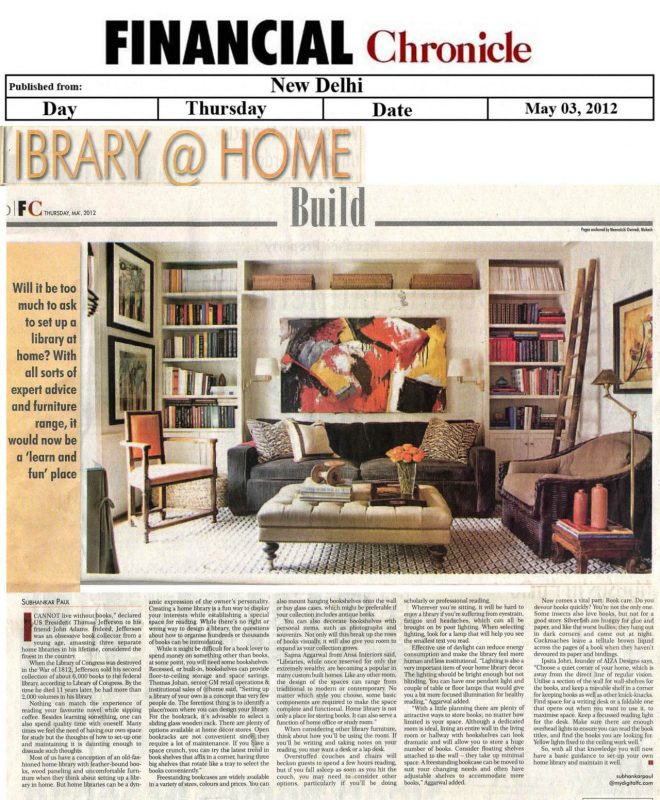Expert advice on the library design at home, originally published in Financial Chronicle, Delhi by creative director, Ansa Interiors.
Libraries, while once reserved for only the extremely wealthy, are becoming a popular luxury and are showing up in many custom built homes. Like any other room, the design of the spaces can range from Old World Traditional, to Modern or Funky Contemporary.
No matter which library style you choose, some basic components are required (or at least highly recommended) to make the space complete and functional.
How To Create Library Design At Home?
Home library is not only a place for storing books. It can also serve a function of home office or study room.
With a little planning there are plenty of attractive ways to store books; no matter how limited is your space. Although a dedicated room is ideal, lining an entire wall in the living room or hallway with bookshelves can look dramatic and will allow you to store a huge number of books.
In short, wherever you can find the space.
Types of Library Design At Home You Can Consider
Consider floating shelves attached to the wall – they take up minimal space. Stacked with vertical volumes, the shelves can create a stunning look and, because they‘re a permanent fixture, you can’t take them with you if you move.
A freestanding bookcase can be moved to suit your changing needs and often have adjustable shelves to accommodate more books. A well-proportioned bookcase can be very space efficient, taking up little floor space while storing a large quantity of books.
You can always store your books on the spare walls or under the staircase where you can also organize a little reading space for yourself.
Alternatively, create symmetry in a living or dining room using the interior designers’ trick of framing a fireplace or large artwork with a pair of bookcases. Most books are narrow and therefore perfect for those awkward areas such as landings and the corners of your room.
Things You Need To Keep In Mind
Work out how many books you need to store, and measure them before you invest in new shelving. A standard bookshelf is generally 250mm in depth, which fits a single row of average-sized books. The thumb rule is that all books visible and therefore only row deep is the best shelving
The room should have a certain temperature and relative humidity in order to keep books safe from destruction and deterioration. So probably basements and other damp places are not suitable areas for a library.
Besides bookshelves the library can be furnished with a sofa, armchairs, desk and ladder if the bookshelves extend to the ceiling. The color scheme should not be irritating or too distracting one.
Lighting is also a very important item of your library design at home. The lighting should be bright enough but not blinding. You can have one pendant light and couple of table or floor lamps that would give you a bit more focused illumination for healthy reading. Effective use of daylight can reduce energy consumption and make the library feel more human and less institutional.
However, uncontrolled daylight can be a source of glare and can damage sensitive materials. North-facing windows where direct sun is allowed to enter reading areas, adjustable window coverings should be provided to optimize illumination.
There you go! Those are our top tips for library design at home. We hope these help you out. Call us for professional assistance!

